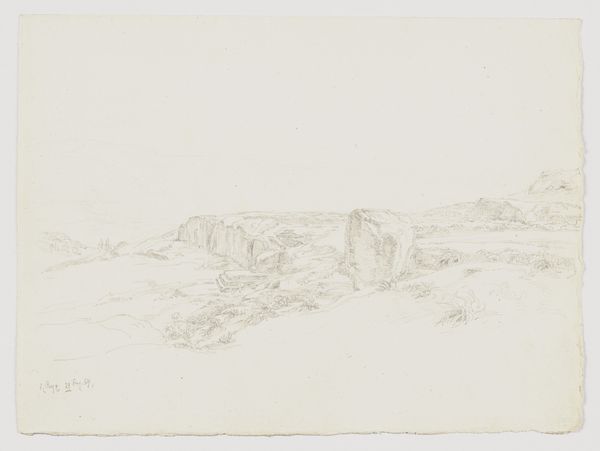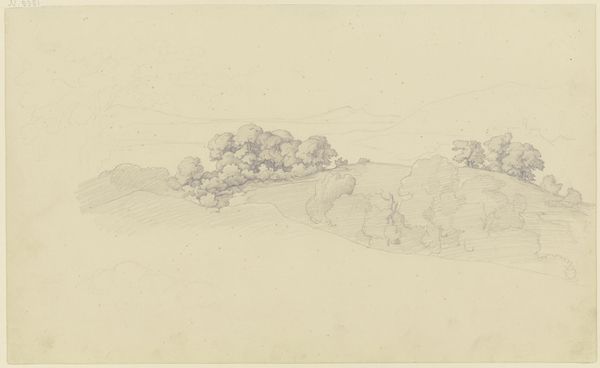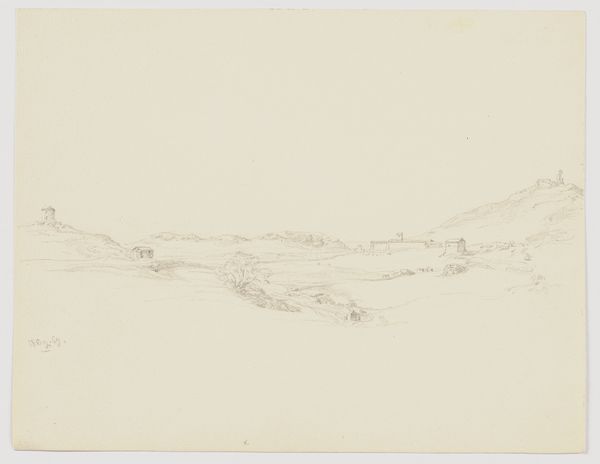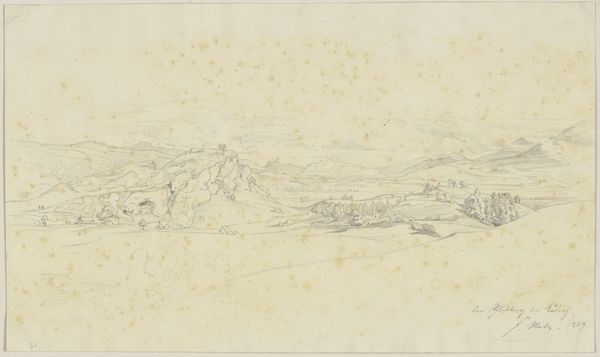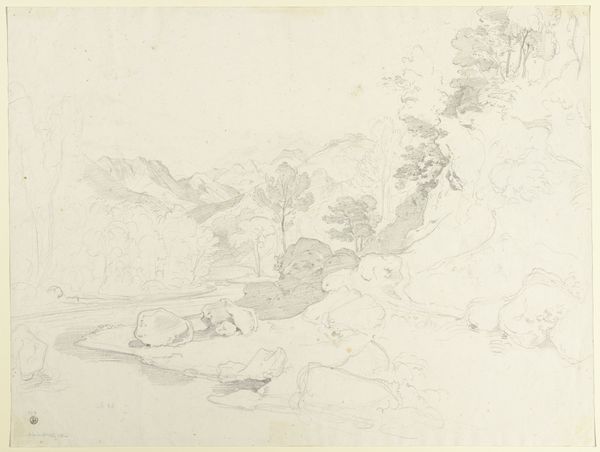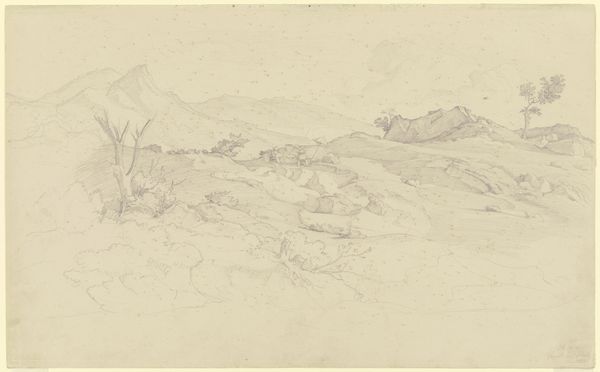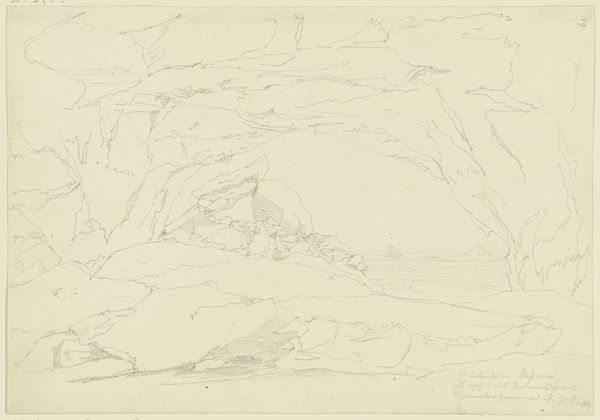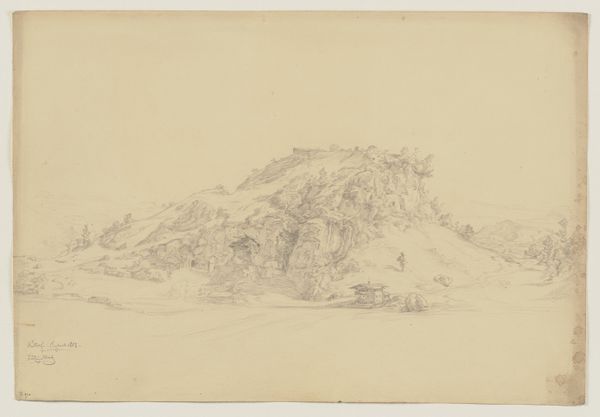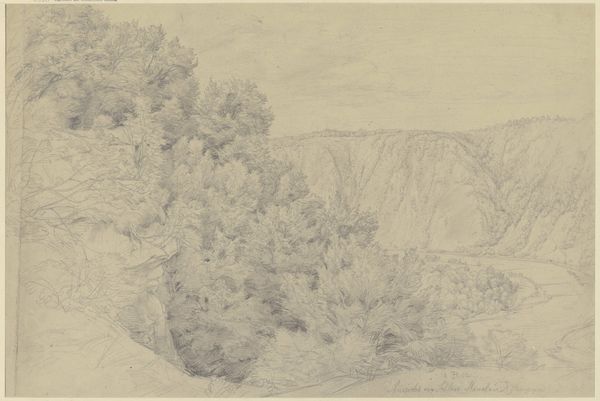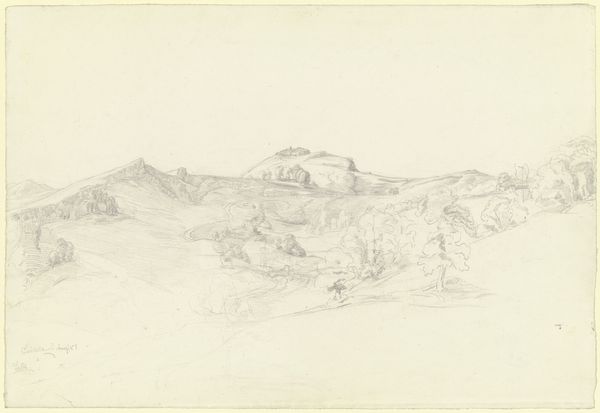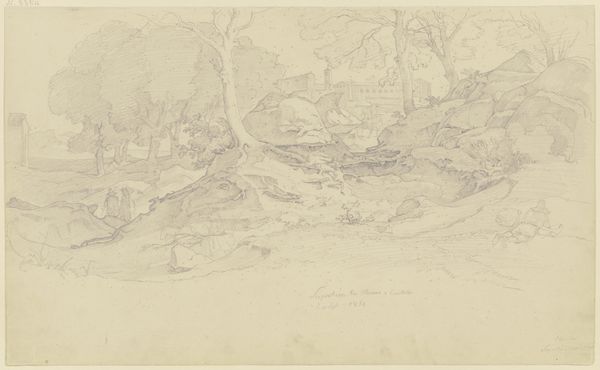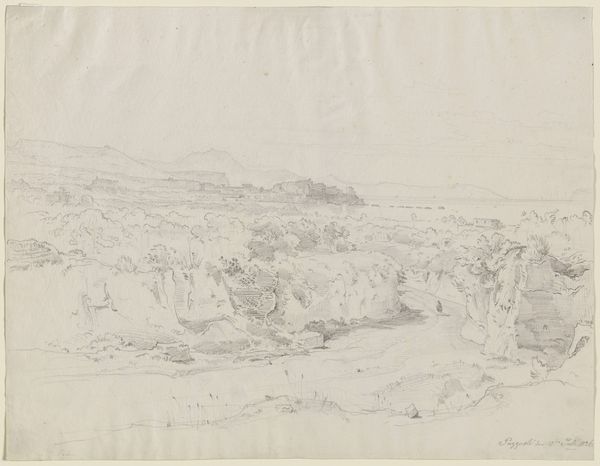
drawing, paper, dry-media, pencil, graphite
#
drawing
#
landscape
#
etching
#
paper
#
dry-media
#
pencil
#
graphite
Copyright: Public Domain
Curator: We're now looking at Ludwig Metz's 1869 drawing, "Simon's Grave," executed in pencil on paper and part of the Städel Museum collection. Editor: Immediately, I'm struck by how desolate it appears. It’s such a sparse rendering, almost like a fading memory. The soft graphite creates this muted, almost dreamlike quality. Curator: Metz's landscapes were often about conveying a sense of place tied to historical narratives. The 'Simon' of the title most likely refers to Simon bar Kokhba, the leader of the Jewish revolt against Roman rule in the 2nd century CE. Sites connected to him carried enormous symbolic weight for Jewish communities, even centuries later. Editor: Right, so this seemingly simple landscape is imbued with layers of political and cultural significance. Is it a site of mourning, a symbol of resilience, or a reminder of past conflicts? Probably all three, woven together. The fact that it's just a drawing amplifies this feeling of impermanence and the delicate balance between remembering and forgetting. Curator: And remember that museums themselves play a key role in this narrative. By choosing to display this artwork, the institution actively shapes the public's understanding of that historical landscape. There is a tension here between history, memorial, art and politics. Editor: Definitely. Think about the impact that choices have—who decides which narratives are visualized and memorialized. I can’t help but wonder about the perspective of those who fought and died; are they acknowledged within this piece? Curator: Good question. I agree; its depiction invites us to consider whose story we’re really seeing and who shapes this historical narrative. Editor: It makes you consider how artists and cultural institutions reflect, reinforce, and, sometimes, subvert established views of historical struggles. It’s more than just a picture; it’s an intersection of politics, memory, and identity. Curator: Looking at the social implications certainly adds another dimension to this artwork. It gives me some new insights to consider, too. Editor: Same here! Thinking about who controls these narratives makes the image even more compelling, doesn't it?
Comments
No comments
Be the first to comment and join the conversation on the ultimate creative platform.
